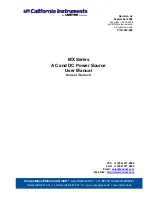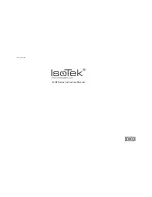
14
EPS4 series Ebbert Power Source (HK1036)
The hydraulic and vacuum test gauges are essential items for maintaining your rivet equipment at peak operating
efficiency. All instruments are equipped with quick connects for on-line testing.
• Vacuum Test Gauge (P/N 300457)
: Remove vacuum line from vacuum generator. Install vacuum gauge.
Indication should be 15 inches (
38.10 cm
) minimum. If lower, vacuum generator assembly should be removed,
cleaned, and reassembled using no lubricant.
• Hydraulic Pressure Test Gauge (P/N 300456)
: Disconnect the Pull Stroke hydraulic line from the power unit
and install the gauge. Press and hold the trigger to actuate the tool. The pressure gauge should indicate 3900–
4000 PSI (
268.90–275.80 BAR
). This is an excellent method of isolating a tool or power unit problem.
• Tube Cutter (P/N 507889)
: Provides clean, true end cuts for any flexible line on the rivet station.
NOTE
:
Chamfer the vacuum hose ID slightly after cutting.
• Seal Housing Removal Tool (P/N 300455)
: Contains graduations for easy seal housing removal from the
cylinder base of the power booster. Using this tool saves time and greatly reduces damage to the cylinder base
and the seal housing.
• Cylinder Wrench (P/N 300459)
: Provides a convenient method of holding Rivet Tools for disassembly and
repair when a vise is not available, such as on the plant floor where the rivet tools are being used. The wrench
holds firmly on the cylinder of the rivet tool and has a cushioned handle/grip for comfort and safety.
• Filler / Bleed Pump (P/N 300509)
: A valuable tool for maintaining Ebbert Power Units. With it, you can fill the
hydraulic fluid reservoir and purge the power booster of air. This can be accomplished in much less time than
manually filling the reservoir or gravity bleeding the system.
• Rivet Tool Bleed Port Hose (P/N 300458)
: When used with the Bleed Pump (P/N
300509
), this tool makes
bleeding or filling any of the Rivet Tools a simple procedure. Merely remove the Bleed Screw (P/N
507660
),
attach the Bleed Port Hose, and pump until bubbles no longer appear in the Hydraulic Reservoir.
t
roubleShootIng
1. Slow tool cycle.
a. Check air pressure and hydraulic pressure. Reference operational schematic at front of manual.
b. Incoming air line must be 1/2” (
12.70 mm
) ID minimum.
2. Tool will not pull fastener.
a. Air may be in the hydraulic system, which would require bleeding (see
A
ir
B
leeding
t
he
P
ower
U
nit
).
NOTE
:
Air entrapment is identifiable by sound. As the tool trigger is actuated, the normal “thud” produced by
the Power Unit is replaced by a metallic “clack.”
Always check the simplest possible cause (such as a loose or disconnected trigger line) of a malfunction first. Then
proceed logically, eliminating other possible causes until the cause is discovered. Where possible, substitute known
good parts for suspected defective parts. Use this troubleshooting information to aid in locating and correcting
trouble.
K
ItS
&
a
cceSSorIeS
WARNING: Do not actuate the trigger until
the bleed screw of the tool is in place.
CAUTION: Do NOT trigger the tool while the
hose is attached. Doing so could damage
the Bleed Pump.


































